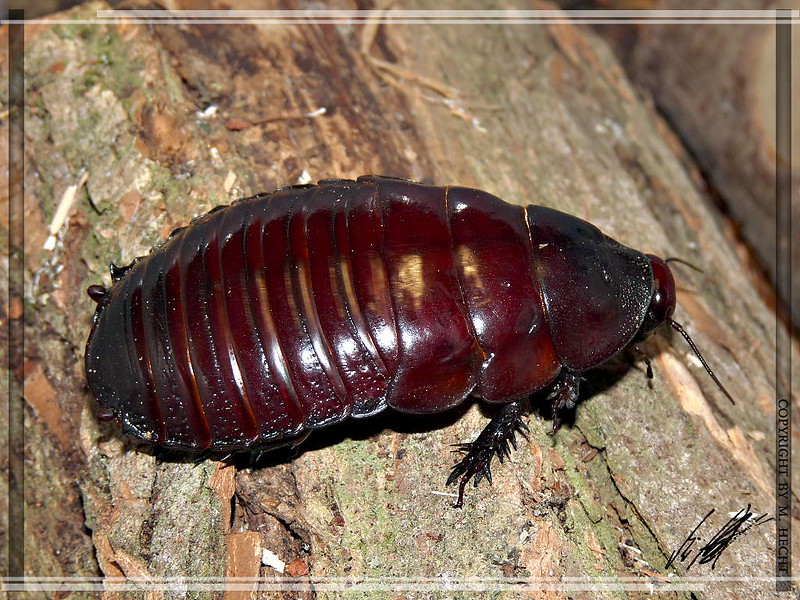Rhinoceros Cockroach Facts
- The Rhinoceros Cockroach ranks as the heaviest species of cockroach known to man. This insect also bears the popular name of the giant burrowing cockroach.
- The name remains rather appropriate as the insect has a tendency to construct extensive burrows roughly 3.1 ft (1 m) beneath the surface.
- Differentiating it from most other varieties of cockroach, few people consider this particular impressive invertebrate to be a pest.
- In fact, within its native habitat range, it represents a vital chain in the ecological system and plays a key role in recycling the abundant organic matter.
Rhinoceros Cockroach Physical Description
The truly enormous Rhinoceros Cockroach attains an average length of roughly 3.1 in (8 cm). Yet, exceptional specimens sometimes exceed this significantly.
It does exhibit a slight degree of sexual dimorphism. In the case of this particular species, the males grow slightly larger in size than the females.
Each gender of Rhinoceros Cockroach possesses a large scoop-shaped structure over the head. That of the male remains noticeably larger than the one of the female.
The coloring typically presents as an overall reddish-brown shade, with random dark and light patches.
- Kingdom: Animalia
- Phylum: Arthropoda
- Class: Insecta
- Order: Blattodea
- Family: Blaberidae
- Genus: Macropanesthia
- Species: M. rhinoceros
Rhinoceros Cockroach Distribution, Habitat, and Ecology
The Rhinoceros Cockroach evolved as native solely to a restricted portion of Australia. There, it primarily inhabits the tropical portions of Queensland.
It also forms an integral component of its native ecosystem as it consumes large quantities of dead leaves, especially eucalyptus. The insect also ranks as rather long-lived, reaching as much as 10 years.
It will also shed its carapace 12-13 times before reaching full growth.
The cockroach also remains capable of producing a loud hiss which remains useful during the fighting, courting, or when disturbed.
Check out our other articles on 3 Wonderful Woody Shrubs of Australia, Crabeater Seal, Mount Etna, Red Trillium, Madagascar Hissing Cockroach, Oceanic whitetip shark, Black Caiman

